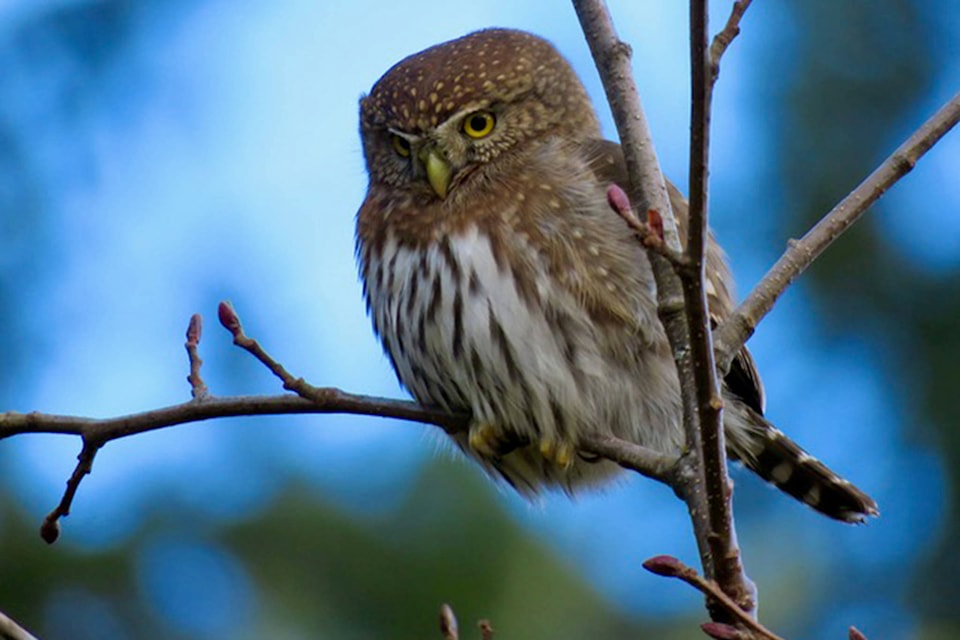By Ed McMackin
These are sounds that may describe the vocalizing of several kinds of area owls, especially in winter and early spring. The great horned owl, with its large size and low pitched booming calls, is probably the most impressive of our owl folk. The horned owl is the one with ear-like feather tufts on its head – “horns”. They do not function directly in hearing.
I recall on one quiet evening while canoeing near Duck Lake, I saw a horned owl at close range, and a second owl on a post several hundred feet away. The one near me would hoot and the second one would hoot in return. This went on for several minutes. I could clearly see the neck and head of the closest owl going back and forth with each hoot. I believe horned owls hoot in response to their mates call, but also hoot to declare their territory. I have heard that the call of the female is higher pitched than the males call. Great horned owls nest and hunt at night in mixed forests with open fields, adjacent roads, and orchards.
A somewhat smaller owl, the barred owl, I find amusing and very interesting to listen to with its large repertoire of bark-like calling and repeated high-pitched, rapid calls when it is extremely upset with an intruding owl. Horned owls are likely one of their worst enemies, often pushing barred owls out of their territory. Barred owls inhabit coniferous (evergreen) forests and give a series of calls that sounds something like, “I cook for myself, who cooks for you all-l-l-l-l.” You guessed right. That call-description came from the “deep south”, where they, also used to say, (not the owls) “morlasses please”.
Then, screech owls screech. From what does the name, “Saw-whet Owl” come?
Last but not least, is the pygmy owl, our smallest owl that’s packed with a peck of power. It preys on mice, voles, small birds and even larger ones. I have observed them go down in the grass and come up to a power line with a mouse as long as the owl’s body. It seemed to find the lift difficult. It has been known to “pounce” from the air on a morning dove on the ground at a bird feeding area, It grasps creatures by the neck with its talons, suffocating them, often severing the spinal cord.
Pygmy owls give a short flute/whistle-like call which is often heard more than the owl is seen. In addition, the call is not often associated with an owl, particularly a pygmy owl. Pygmy owls are diurnal, frequently spotted in the morning or evening, or on cloudy days, while perched on the top of a pole, tree, or from a power line. In a wind, they sway back and forth to maintain their balance on a swinging wire or limb.
These little owls also flute/pipe at night. At the rate of one short whistle for every three seconds they seem quite content but if excited I have heard them pipe twice per second, per minute.
Once when I was “perched” in a tree, taking pictures of young owls, three young girls came up along a fence-line. They were talking away, when an adult horned owl hooted. They stopped and one quietly said, “That’s an owl!” Then another said, “Lets go home”, and they left. I don’t think they saw me in the tree.
I like hearing the owls call, especially in the evening, from large Douglas fir trees in town, around rural areas, or in the forest. The calling reminds me we still have some wildness and natural phenomena around.
READ MORE: Out There: The Shrew and the Shrike
